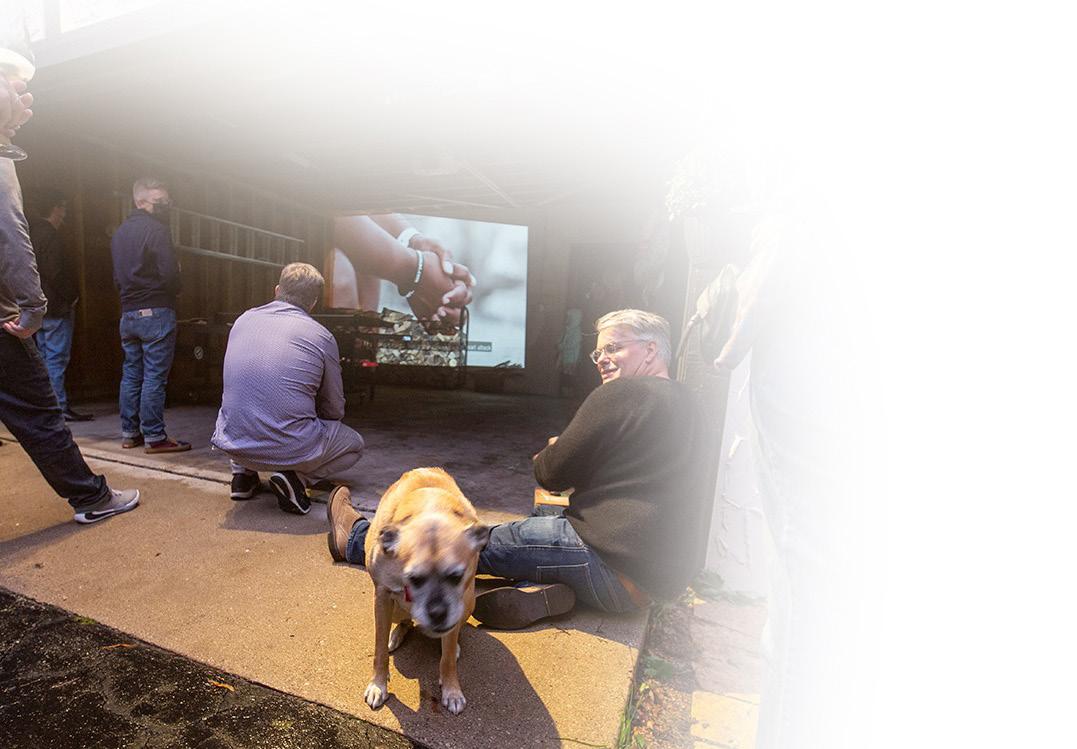
6 minute read
By Beverly P. Alfon • SmithAmundsen LLC
Worker Activism and Union Organizing Amid COVID-19
As the pandemic has worn on, and more “essential workers” have fallen ill with COVID-19, worker activist groups (“worker centers”) and labor unions have come into view, front and center.
WHAT IS THE DIFFERENCE BETWEEN A WORKER CENTER AND A LABOR UNION?
Labor Unions: These are the traditional organizations that most of us are familiar with. They are usually industry-specific and le-
Beverly P. Alfon SmithAmundsen LLC
gally recognized as the exclusive bargaining representative of a majority within a group of workers (a bargaining unit). Unions are required by federal law to bargain with the employer of the bargaining unit, regarding work terms and conditions, most of which are documented within a collective bargaining agreement (CBA). A CBA typically includes a “no strike” clause that prohibits the union from engaging in a strike or work stoppage during the effective period of the CBA. It also usually requires the union to raise its gripes through an agreed upon grievance and arbitration process.
Worker Centers: These are typically grassroots, nonprofit organizations, with ties to a particular community through language, culture, or religion. These groups commonly identify their purpose as helping workers to “organize,” become knowledgeable about their rights as workers, and obtain support for their exercise of those rights. Unlike traditional labor unions, these groups do not operate under strict federal reporting and financial disclosure
requirements or the constraints of “no strike” clauses that are often part of a CBA between a union and employer.
The pandemic has given many labor unions a platform to revitalize and actively promote their purpose to the public and their members. Since mid-March, labor unions have been highly visible in the press. In May, the AFL-CIO (the largest federation of international labor unions in the U.S.) filed a lawsuit in federal court against the Occupational Safety and Health Administration (OSHA), seeking to compel the agency to issue an emergency temporary standard that would mandate certain safety actions by employers. At the end of July, the United Food and Commercial Workers International Union (UFCW) and other local unions sued the U.S. Department of Agriculture (USDA), claiming that the federal waivers that the agency granted to Tyson Foods to speed up operations at chicken processing plants were increasing the likelihood of coronavirus spread and putting workers in danger. The UFCW has even started its own contact-tracing programs for its 1.3 million members. More recently, we’ve also seen teachers’ unions in a number of states sue to block officials from reopening schools over safety concerns. There is no question that labor unions are using the pandemic as an opportunity to reinvigorate the labor movement.
The pandemic has also spurred many non-union workers to take action. Afterall, non-union employees can walk off the job to protest safety concerns and still be protected under federal labor law (the National Labor Relations Act), which protects these concerted activities, regardless of whether the employees are represented by a union. There have been walkouts to protest unsafe work conditions in nonunion workplaces such as Amazon warehouses in Staten Island, New York, and Amazon-owned Whole Foods grocery stores in Chicago and other locations; and McDonald’s workers in Chicago have sued the corporation over safety concerns. What is important to note, however, is that much of this “non-union activity” has occurred with the support of worker centers -- which are often supported by established labor unions. For example, the Service Employees International Union (SEIU) openly backed the McDonald’s workers who fought in court for more safety protections. At the end of July, two business-backed groups filed a complaint with the U.S. Department of Labor, asserting that a worker center in Washington should be subject to the same reporting and disclosure requirements that unions are, because the worker center allegedly received $15.5 million in payments from various labor unions. So while some non-union workers may be more apt to seek assistance from worker centers than the traditional labor unions – make no mistake that these worker centers are a gateway to labor union organization of these workers.
Even the rhetoric from the AFL-CIO has been noticeably focused on “all workers” as opposed to “their members.” After facing a continuing decline in membership, unions seemingly recognize that they cannot let this opportunity to organize more workers pass them by. For example, in an April 30 opinion piece published by the CHICAGO SUN-TIMES, Gary Perinar, executive secretary-treasurer of the Chicago Regional Council of Carpenters, declared: “The importance of unions is more obvious than ever during the COVID-19 pandemic…Of all the injustices exposed by this public health crisis, the risks faced by non-union workers are the most apparent.” It was a direct call to non-union workers.
At the very least, the recent uptick in worker activism signals that there are groups of employees who are not currently represented by a labor union (and who may have never considered a union before this pandemic), who may be ripe for union organizing. As businesses move forward, and employee concerns increase regarding safety at work, wages, paid sick leave, child care, disability accommodations, and the status of laid off employees, worker activism is likely to continue percolating. Job insecurity, safety concerns, and benefits are the very matters that unions rely upon to organize workers.
IF YOU HAVE ANY NON-UNION EMPLOYEES WHO HAVE VOICED CONCERNS OVER WAGES, JOB INSECURITY, SAFETY, AND BENEFITS OVER THE PAST SEVERAL MONTHS, NOW IS THE TIME TO ASSESS YOUR VULNERABILITY TO ORGANIZATION AND CONSIDER YOUR AVOIDANCE PLAN.
1. Identify who your supervisors are (as defined by the National Labor Relations
Act) and get them trained on identifying and dealing with protected, concerted activity and union organizing. A true
“supervisor” cannot be represented by a union and is not protected by the NLRA.
They are also agents of your company— which means their actions can create liability for your company—so training is key. They need to know what they can and cannot do under the law. 2. Reevaluate your existing policies for clarity, perceived unfairness, and employee relations. What have employees raised concerns about over the last 6 months?
Last year? A union will often focus employees on what they consider to be unfair policies.
3. Benchmark wages and benefits. What are the area wages and benefits in your specific industry? A union will often promise more money and better benefits. So, it is best to know now and be prepared with a response.
4. Identify employee relations problems now and deal with them before employees turn to a union. Get feedback from the group of employees who are vulnerable to union organization. Sometimes union avoidance is as simple as tweaking a supervisor’s management style.
5. Train management on positive employee relations. Your supervisors need to know about the importance of providing regular feedback to employees and maintaining open communication with them.
6. Get a communications plan in place in the event that union organizing begins or has begun.
Merely being aware of a potential threat of union organizing or other protected, concerted activity at your workplace is not enough. Thorough assessment and planning are necessary now, so that if the need arises, responses can be timely, effective, and within the parameters of the law. Also, keep in mind that if your employees are already engaged in concerted activity to object to or seek to improve their work terms and conditions, their conduct is generally protected by the National Labor Relations Act – whether or not they belong to a union. An employer must tread carefully under these circumstances as any adverse, discriminatory, or coercive actions may be deemed a violation of federal labor law.
Beverly Alfon is a partner in SmithAmundsen’s Labor & Employment Practice Group, representing management before the National Labor Relations Board, labor arbitrators, state and federal courts, the EEOC and Illinois Department of Human Rights. Contact: balfon@ salawus.com.









